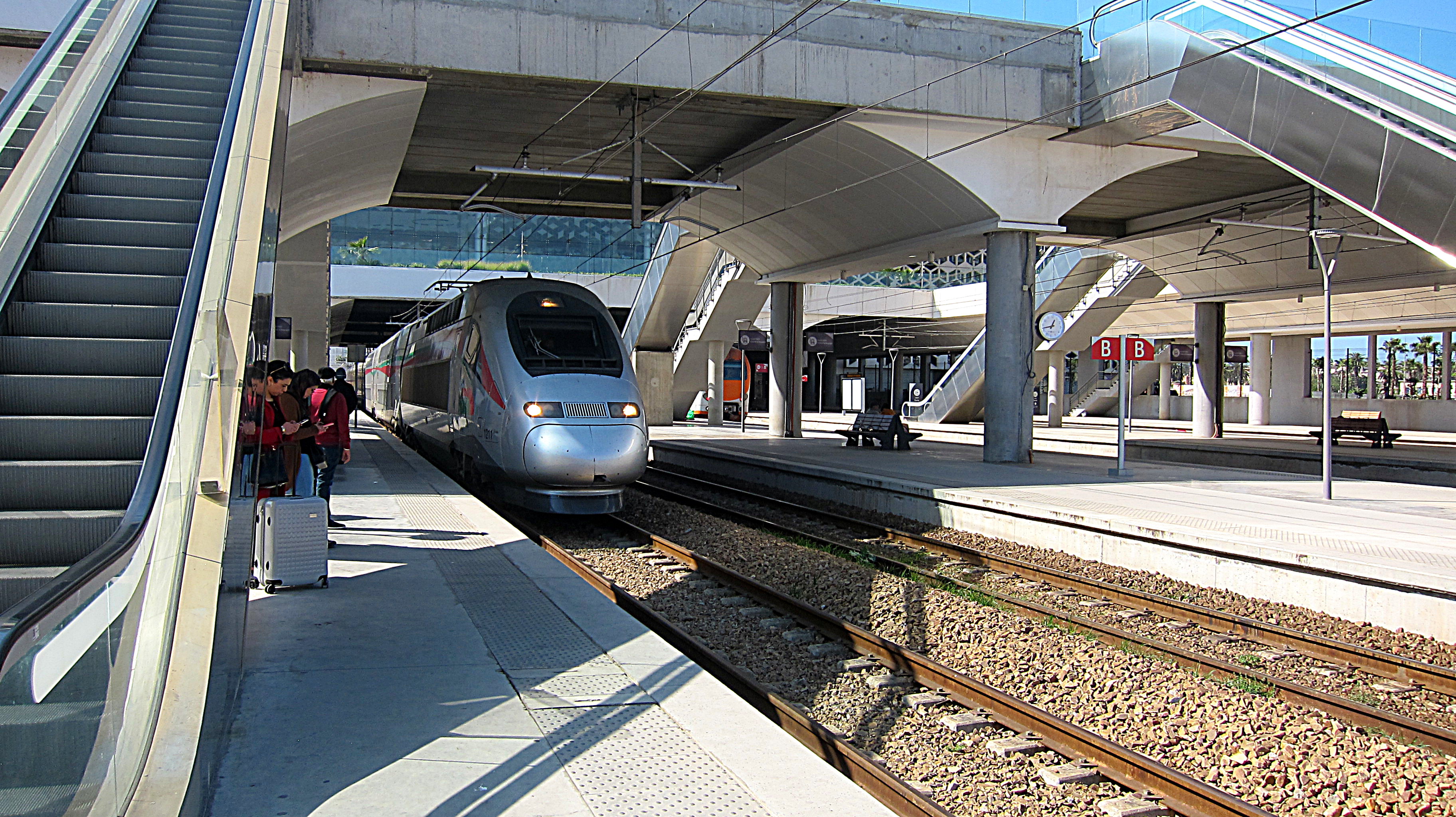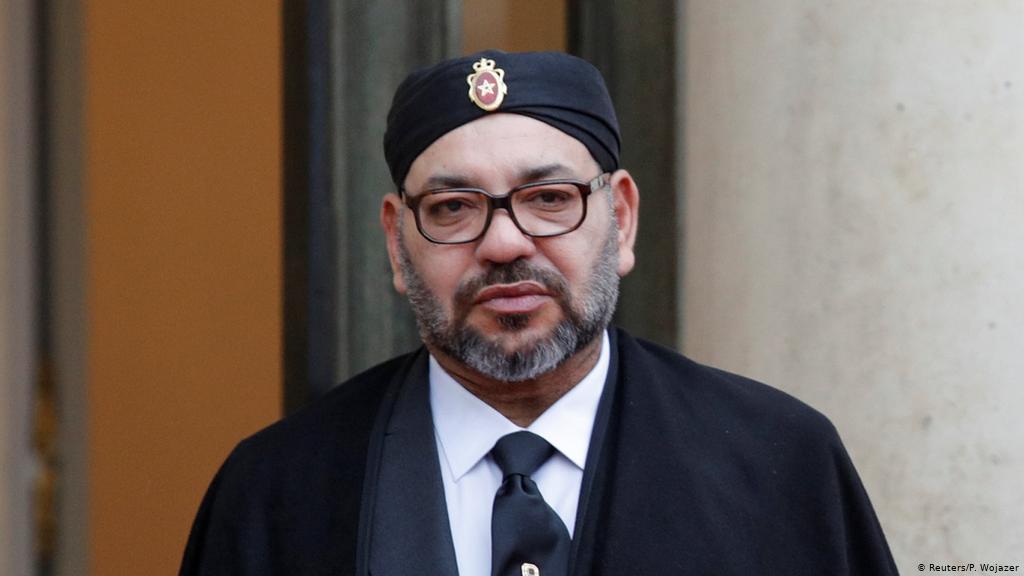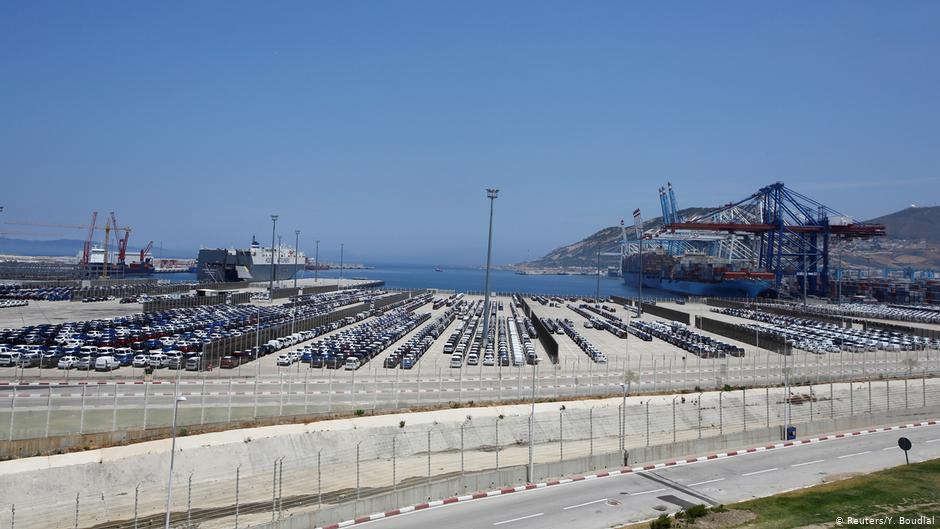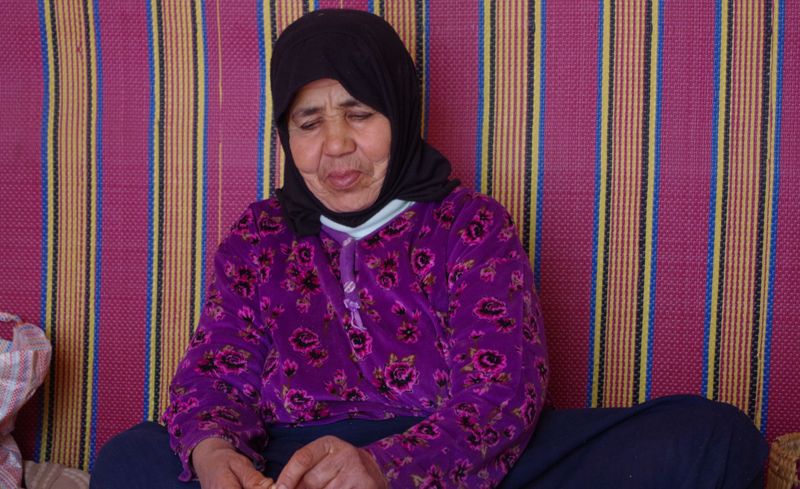Morocco's fast-track development programme bypasses many

Train stations in Morocco are impressive buildings, oversized dreams made of glass and concrete. Rabat Agdal station is said to be the largest in Africa. The ultramodern, high-speed "Al Boraq" train arrives here from the business metropolis of Casablanca on its way to Tangiers in northwest Morocco.
The train rolls slowly through the suburbs of Rabat, but then quickly picks up speed. After passing through the city of Kenitra, it reaches its top speed of over 320 kilometres per hour on a dead straight stretch of track. Al Boraq is Africa's first high-speed train.
It roars past corrugated metal huts, small villages and grazing sheep. Out the windows one can see women working in the fields with bent backs and farmers transporting goods on carts pulled by horses or donkeys. The contrast between the ultra-modern train and country life could hardly be greater.
Symbolic of an ambitious policy of modernisation
By 2035, the high-speed rail network is expected to span 1,500 kilometres, eventually reaching Tripoli in Libya via Algiers and Tunis. However, relations between Morocco and Algeria have been icy for decades because of the dispute over the Western Sahara, and Libya is currently descending into chaos.
Even before the prestige project of Morocco's King Mohammed VI and France's President Emmanuel Macron was inaugurated in November 2018, the considerable costs of around two to three billion euros (depending on the source) and the lack of any public tendering process had already attracted criticism.
The train has become the symbol of an ambitious policy of modernisation with which King Mohammed VI aims to put his country in the vanguard in North Africa.

Since the turn of the millennium, the Arab country has taken important steps on its way from an agricultural to an industrial and service society. Mohammed VI, or M6 as he is called in Morocco, is pursuing a dual strategy. He wants to move closer to Europe both economically and politically while at the same time orienting the country towards the future markets of West Africa.
International trade hub
Tangiers plays a key role in economic cooperation with Europe. Located on the Strait of Gibraltar, just off the coast of Spain, it is predestined to act as a hub for international trade between Europe, Africa and Asia.
The Tangiers Med container port and a free trade zone have attracted more European investors since 2008. In the meantime, Tangiers Med has become the largest container port in the Mediterranean with an annual capacity of nine million containers.
In addition to textile companies such as the Spanish low-cost fashion chain Zara, the free trade zone is home to Airbus and Boeing, and the French car maker Renault set up a plant here in 2012. Renault produces its "Dacia" model in Morocco for both the domestic market and export to Europe.
Peugeot has also been producing cars in Morocco since 2019. A Moroccan automotive supply industry has emerged, so that about half of the car parts used for local production are made in Morocco, which is not the case in Tunisia, Algeria or Egypt.
Focusing on Africa
While the European Union remains Morocco's most important economic partner, Mohammed VI has been increasingly focusing on sub-Saharan Africa since he took office in 1999. In the West this new orientation has largely gone unnoticed.

Morocco has invested around 3.7 billion euros in sub-Saharan Africa, mainly in the banking and insurance, telecommunications, pharmaceutical and fertiliser sectors. Maroc Telekom, for example, is already represented in 25 African countries with over 1,400 branches. Apart from South Africa, Morocco is now the largest intra-African investor on the continent.
For Christoph Kannengießer of the German-African Business Association, this strategy makes perfect sense. "While the markets in ageing Europe are largely saturated," he says, "Africa is young and hungry for growth, prosperity and development. The region has a 'huge amount of pent-up demand'". Countries such as the Ivory Coast and Senegal are among those with the highest growth rates worldwide.
Politically, this strategy has been flanked by Morocco's re-entry into the African Union in 2017 after an absence of 32 years. Morocco has also positioned itself as a leading educational setting for young Africans. Attractive scholarships lure students here from all over Africa.
While students from sub-Saharan Africa came to Morocco only sporadically in the 1990s, the year 2019 saw around 20,000 new arrivals, according to the Ministry of Education, half of whom have scholarships from the Moroccan state. After returning to their home countries, they are to serve as informal "Moroccan ambassadors", lastingly strengthening the Kingdom's position on the continent.
Europe has applauded Morocco for its dual strategy, delighted to have an apparently stable state in North Africa. Economic experts praise the business climate. In the World Bank's Doing Business Index, hardly any country has made more progress in recent years than Morocco, which has climbed from 130th place at the turn of the millennium to 53rd place in the 2019 index.
Downsides of neo-liberal modernisation
But the positive economic data conceal considerable shortcomings in the Moroccan approach. And the figures say nothing about the tensions created in the country by the neo-liberal modernisation policy of "M6". These downsides are more strongly perceived in Morocco itself than in Europe. They are directly rooted in the country's autocratic system, in which the monarch and an affiliated business elite dominate the economy and politics.
As it turns out, Mohammed VI is apparently the richest man in Africa. The US magazine Forbes estimated his wealth at five billion euros in 2017, double the amount he had in 2011, the year of the Arab Spring. "M6" is also the country's premier businessman and top investor. State and personal interests intermingle here.
Through his Al Mada group of companies (known before 2018 as Société Nationale d'Investissement), he holds shares in enterprises in all major sectors. When Moroccans go shopping at the Marjane supermarket chain, they also fill his coffers. For large-scale projects such as Al Boraq, there are no transparent public tenders or feasibility studies; contractors associated with the palace are awarded the contracts.
Investment focuses unilaterally on the coastal region with the economic centres of Tangiers and Casablanca, while basic infrastructure such as water supply, electricity, education, transport and health care is lacking outside the major cities. In some parts of the country, children cannot go to school because there are no transport facilities, and some small towns are not even connected to the road network. There is still a relatively high number of illiterate people, especially among women in rural areas.
High unemployment and growing inequality

In addition to high unemployment, especially among under-25-year-olds, it is this regional and social inequality that causes so much resentment among the populace. Inequality is in fact more pronounced in Morocco than in neighbouring countries. Ten percent of the population live in absolute poverty. According to a study by Oxfam in 2019, one the key causes of inequality is a particularly unfair tax system, in which companies such as those in the free trade zones and the rich are hardly ever taxed, while the mass of Moroccans carry a heavy tax burden. Other major factors are a poor state-run education system and the sharp disparity between urban and rural areas.
Public awareness of this inequality and the self-enrichment of the business elite close to the palace is growing. Outrage has been fuelled for example by the Al Boraq high-speed train. While the "Stop TGV" campaign had in the meantime died down somewhat, the coronavirus crisis brought the blatant contradiction between the expensive high-speed train and an ailing, underfunded health care system back into the spotlight.
New forms of civil disobedience
"Next time we should think again before building a high-speed line while the hospital next door is lacking disinfectants," Omar El Hyani, Rabat city councillor and one of the leaders of the "Stop TGV" campaign, told the political magazine TelQuel.
As open protest is difficult due to increased state repression, however, new forms of civil disobedience have emerged. In 2018 anonymous net activists called on consumers to boycott Sidi Ali mineral water, Danone yoghurt and petrol from Afriquia. The campaign was ostensibly about combatting high prices.
In fact, though, the boycott targeted leading enterprises affiliated with the royal house, says Moroccan economist Omar Brouksy. The success of the campaign can be measured by the fact that Danone Morocco alone saw a dip in sales in the amount of 150 US million dollars within just a few weeks.
"We are seeing a new public awareness," Transparency Maroc noted. These tensions underscore the ambivalence of Morocco's current development strategy. The question is how much longer the Moroccans will be prepared to accept social inequality and nepotism in their country.
Claudia Mende
© Qantara.de 2020
Translated from the German by Jennifer Taylor